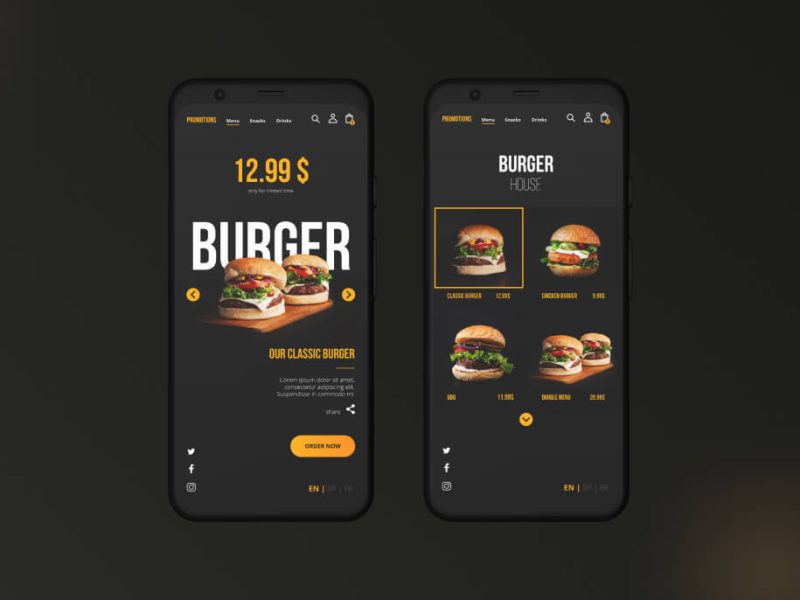Online Food Delivery Mobile App Design.
Through a wide variety of mobile applications.

Through a wide variety of mobile applications.

Designing an online food delivery mobile app involves creating an intuitive, visually appealing, and highly functional platform that enhances the user experience from ordering to delivery. As competition in the food delivery market intensifies, a well-designed app can set a business apart by making the ordering process seamless and enjoyable. Here’s a detailed overview of key considerations in the design of an online food delivery app:
1. User-Friendly Interface: An intuitive and user-friendly interface is crucial for a smooth ordering experience. The design should feature a clean, organized layout with easily accessible menus and clear navigation options. Users should be able to browse restaurants, view menus, and place orders with minimal effort.
2. Engaging Visual Design: Visual appeal plays a significant role in attracting and retaining users. Use high-quality images of food and restaurants to entice users and make the app more engaging. The color scheme, typography, and graphics should align with the brand’s identity and evoke a sense of appetite and enjoyment.
3. Advanced Search and Filtering: Implement advanced search and filtering options to help users find their preferred restaurants or dishes quickly. Users should be able to filter by cuisine, price range, dietary preferences, and delivery time. A robust search functionality improves user satisfaction and reduces frustration.
4. Real-Time Order Tracking: Real-time order tracking is a key feature that enhances user confidence and satisfaction. Provide live updates on the status of their order, including preparation, dispatch, and estimated delivery time. Integration with GPS technology allows users to track their delivery in real-time, offering transparency and reducing anxiety.
5. Easy Menu Navigation: Menus should be easy to navigate, with clear categories and subcategories for different types of food. Each item should include detailed descriptions, images, and pricing information. Users should be able to customize their orders easily, such as adding special instructions or selecting preferences.
6. Seamless Payment Integration: Offer multiple payment options, including credit/debit cards, digital wallets, and cash on delivery. The payment process should be secure, straightforward, and quick, with options for saving payment details for future orders. Implementing robust encryption and security measures is essential to protect user information.
7. Personalized Recommendations: Incorporate personalized recommendations based on users’ previous orders, preferences, and browsing history. Machine learning algorithms can help suggest relevant dishes and restaurants, enhancing the user experience and encouraging repeat business.
8. Customer Reviews and Ratings: Allow users to leave reviews and ratings for restaurants and delivery experiences. User-generated content provides valuable feedback and helps other customers make informed decisions. Displaying ratings and reviews prominently can also incentivize restaurants to maintain high service standards.
9. User Account Management: Provide features for user account management, including profile creation, order history, and saved addresses. Users should be able to view past orders, reorder favorite items, and update their personal information with ease.
10. Push Notifications and Alerts: Use push notifications to keep users informed about order status, special offers, and promotions. Notifications can also remind users about upcoming orders or encourage them to re-engage with the app.
11. Customer Support and Feedback: Offer accessible customer support options, such as live chat, email, or phone support. Users should be able to easily report issues or seek assistance with their orders. Collecting feedback through surveys or in-app prompts helps improve service and address user concerns.
12. Performance Optimization: Ensure the app is optimized for performance, including fast loading times and smooth interactions. A well-optimized app minimizes delays and enhances user satisfaction. Regular updates and bug fixes are essential to maintain app performance and reliability.
In summary, designing an online food delivery mobile app involves creating an engaging, user-centric experience that simplifies the ordering process and meets users’ needs. By focusing on intuitive design, advanced functionality, personalization, and robust support, you can develop an app that stands out in a competitive market and delivers a superior food delivery experience.
Hello
